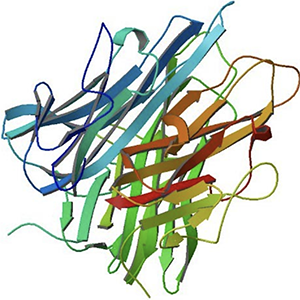Mini-reviews
Vol. 2 No. 2 (2023)
Tumor necrosis factor superfamily in multiple sclerosis: from pathology to therapeutic implications

Publisher's note
All claims expressed in this article are solely those of the authors and do not necessarily represent those of their affiliated organizations, or those of the publisher, the editors and the reviewers. Any product that may be evaluated in this article or claim that may be made by its manufacturer is not guaranteed or endorsed by the publisher.
All claims expressed in this article are solely those of the authors and do not necessarily represent those of their affiliated organizations, or those of the publisher, the editors and the reviewers. Any product that may be evaluated in this article or claim that may be made by its manufacturer is not guaranteed or endorsed by the publisher.
Received: 8 March 2023
Accepted: 13 April 2023
Accepted: 13 April 2023
1144
Views
267
Downloads
Similar Articles
- Robert Parambi, Nicole Ziliotto, Francesco Bernardi , Marcello Baroni , Richard W Browne , Dejan Jakimovski, Bianca Weinstock-Guttman, Robert Zivadinov, Murali Ramanathan, Crosstalk between hemostasis inhibitors and cholesterol biomarkers in multiple sclerosis , Bleeding, Thrombosis and Vascular Biology: Vol. 1 No. 3 (2022)
- Roger Lijnen, Désiré Collen, The key to fibrinolysis and thrombolysis , Bleeding, Thrombosis and Vascular Biology: Vol. 4 No. 3 (2025)
- Sergio Coccheri, A re-appraisal of thrombogenesis in COVID-19, seen as a multiple "Complex system" , Bleeding, Thrombosis and Vascular Biology: Vol. 1 No. 3 (2022)
- PO66 | Viscoelastic tests in disseminated intravascular coagulation associated with aortic aneurysm , Bleeding, Thrombosis and Vascular Biology: Vol. 4 No. s1 (2025)
- CO39 | Artificial intelligence in hemophilia management: challenging the need for experts , Bleeding, Thrombosis and Vascular Biology: Vol. 4 No. s1 (2025)
- CO50 | Diagnostic accuracy of the heparin-induced multiple electrode aggregometry (HIMEA) functional test for heparin-induced thrombocytopenia , Bleeding, Thrombosis and Vascular Biology: Vol. 4 No. s1 (2025)
- PO67 | Pancreatic cancer in a 71-year-old severe hemophilia A patient with inhibitors and sustained zero bleeding during emicizumab prophylaxis , Bleeding, Thrombosis and Vascular Biology: Vol. 4 No. s1 (2025)
- CO02 | Hepatic fibrosis as predictor of cancer-associated thrombosis in patients with intrahepatic cholangiocarcinoma , Bleeding, Thrombosis and Vascular Biology: Vol. 4 No. s1 (2025)
- Bianca Clerici, Mariangela Scavone, Gian Marco Podda, Recent advances in classic heparin-induced thrombocytopenia (HIT), autoimmune HIT, spontaneous HIT, and vaccine-induced immune thrombotic thrombocytopenia , Bleeding, Thrombosis and Vascular Biology: Vol. 3 No. 2 (2024)
- CO13 | Genetic background in hypercholesterolemic patients framing cardiovascular risk , Bleeding, Thrombosis and Vascular Biology: Vol. 4 No. s1 (2025)
1-10 of 33
Next
You may also start an advanced similarity search for this article.








